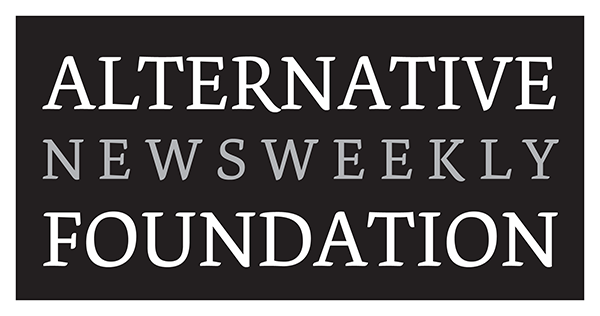Fiscally sponsored projects, especially those new to fundraising, search every nook and cranny for solid financial support. Initial donations might be from friends and family, leading to new individual donors, then maybe corporate sponsorship, grants, and commercially sponsored donor advised funds (DAFs). Your local community foundation might be overlooked.
According to the Council on Foundations, community foundations are “… a grantmaking public charity dedicated to improving the lives of people in a specific local area. It brings together financial resources from individuals, families, and businesses to support effective nonprofits within the community. These foundations play a key role in identifying and addressing both immediate and long-term community needs. They can support a range of activities, including arts, education, health, human services, the environment, and more.”
Now is the time to meet with the foundations that are truly close to home.
Community Foundations are the Original DAF
Founded in 1924, the first community foundation, The New York Community Trust, has since awarded $5.7 billion to local causes. Searching for a more personal and participatory way to support charitable causes, the wealthy turned to community foundations which offered a practical, locally-focused alternative to setting up a private fund that would be expensive and cumbersome to manage.
Community foundations created the DAF model: individuals contribute assets, receive an immediate tax deduction, and recommend grants over time to support the issues that matter the most to them. The foundation handles administration, regulatory compliance, and can help donors identify impactful opportunities within the community. Donating via a foundation also allows the donor to remain anonymous if desired.
Continued Importance of Community Foundations
Community foundations are embedded in the regions they serve. When compared to nationwide commercial DAFs this local focus sets them apart:
- Deep Local Knowledge: Many community foundations have served residents for decades. They understand the needs of both their donors and the charities who benefit from these gifts.
- Civic Leadership: As stalwart members of the community, they serve as conveners, advocates, and problem-solvers, working to address systemic issues alongside donors and partners.
- Legacy and Stewardship: They provide a trusted, mission-driven space for donors who want their gifts to make a positive impact and align with long-term community well-being.
DAFs originated from this mission-driven ethos. The model was built not just for efficient giving, but for meaningful giving rooted in community needs.
Why Fiscally Sponsored Projects should Engage
Building a relationship with a community foundation is not just a fundraising tactic—it’s a strategic partnership. Here’s why:
- Access to Donor Advised Funds: Many donors look to their community foundation for guidance on where to give. Fiscal sponsors and their projects who are known and trusted by the foundation are more likely to be recommended as grant recipients.
- Visibility to Local Philanthropists: Community foundations act as a bridge between donors and charities. Being on their radar means being visible to individuals and families who care about your cause and mission, but may not know your organization yet.
- Support Beyond the Check: Foundations often provide capacity-building resources, training, and technical assistance. With their emotional investment in the community’s health, they want to see grantees succeed long-term.
- Opportunities for Collaboration: Community foundations convene stakeholders, coalitions, and partnerships. Charities that engage are more likely to be included in broader initiatives tackling systemic issues.
- Credibility: Being a grantee of a respected community foundation adds to an organization’s reputation. It signals trustworthiness and alignment with community impact goals and values.
Community foundations seek effective charities to elevate to donors and include in their unwavering drive to build stronger communities—they are a door worth knocking on.
Time to Get Started
Let’s begin with some quick stats:
- According to Community Foundations Awareness Initiative, there are over 900 community foundations across the United States, collectively granting more than $14.8 billion each year and managing more than $112.7 billion in charitable assets.
- In a 2023 survey conducted by Council on Foundations, participating community foundations held over $152 billion in assets, received over $16 billion in gifts, and gave nearly $19 billion in grants.
Getting noticed is similar to searching for other grants:
- Check out Council of Foundation’s nationwide locator for organizations in and around your locale.
- Sign up for your local foundation newsletter.
- Peruse the staff and board membership information, to see if you know someone who might help you with an introduction.
- Peruse their website for recent grantees, grantseeker information, guidelines, an eligibility quiz, and more. Look for a place to post a “Letter of Inquiry” or if they are requesting proposals.
- Most may not invite a grant application without first getting to know you. Try contacting communications personnel to set up a meeting; it’s their job to engage with the public.
- Pay attention to application deadlines—some are revolving and some annual.
- Follow and engage on all the foundation’s social channels. The messaging on the platforms might be different, so ensure you don’t miss anything.
- Attend in-person events hosted by the foundation, and networking opportunities sponsored by your local chamber of commerce. Offer to be a guest speaker at service-focused club meetings and participate in other community events. The more visible and active you are in the community, the more likely you are to attract donor support.
Why the Origin Story Matters Today
As the DAF landscape evolves, with commercial sponsors offering fast, tech-driven options, it’s more important than ever to remember where DAFs began — and why. Community foundations offer something deeper than convenience: they offer connection. Connection to place, to purpose, and to people working together to create lasting change.
When donors choose to establish DAFs in their own community, and when fiscally sponsored projects choose to engage with them, they’re participating in a tradition of philanthropy that’s personal, relational, and very, very local.





